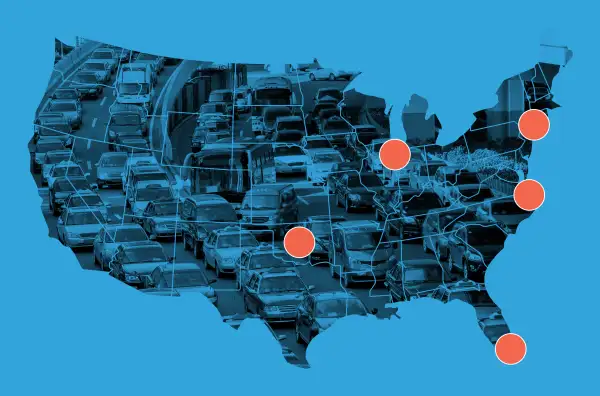This Map Shows the U.S. Cities Where Skilled Workers Are Fleeing the Fastest

Every year, millions of Americans move thousands of miles from home, often in pursuit of new, and better, job opportunities.
But when droves of skilled workers flee specific areas--economists call this "brain drain" — it can devastate the places they leave behind.
That's bad news for Hartford, Providence, and Pittsburgh, three cities workers are leaving en masse, according to new research from LinkedIn.
The jobs site tucked two graphics into its latest workforce report that show which U.S. cities are losing the most employees, and which cities are snatching them up, based on the locations of its massive database of users.
A number of cities scattering the Midwest are hemorrhaging talent — Chicago, St. Louis, and Oklahoma City have all lost workers, according to LinkedIn.
But the East Coast fared the worse by far: For every 10,000 LinkedIn members in each respective city, about 61 left Hartford, 49 left Providence, and 43 left Pittsburgh over the last year.
Workers pack up and leave for a variety of reasons, with living costs and job opportunities likely the most common. The U.S. job market is red hot right now -- for some people in places like Providence, which has a 5.3% unemployment rate (compared to the 4.1% national average), skipping town makes a lot more sense than sticking around.
So they're hitting the road, and the cities they're leaving behind are shrinking. Rhode Island's population exodus is so bad that lawmakers are considering paying people up to $10,000 to move there.
Where are all these people going? According to LinkedIn, more workers are flocking to places like Austin, Nashville, and Seattle -- cities with healthy job markets, and the kind of tech-friendly creature comforts that tend to attract millennials. Denver, which has gained more workers in the last year than anywhere else, has the second lowest millennial unemployment rate in the country, according to the Denver Post.
These cities are so popular that they're now bringing in more people than the San Francisco Bay Area, the long-reigning, talent-stealing, tech-hiring champion.
The number of people moving to San Francisco has dropped about 42% since February 2017, according to LinkedIn. In the site's list of cities that have attracted the most employees over the last year, San Francisco didn't even make the cut.
